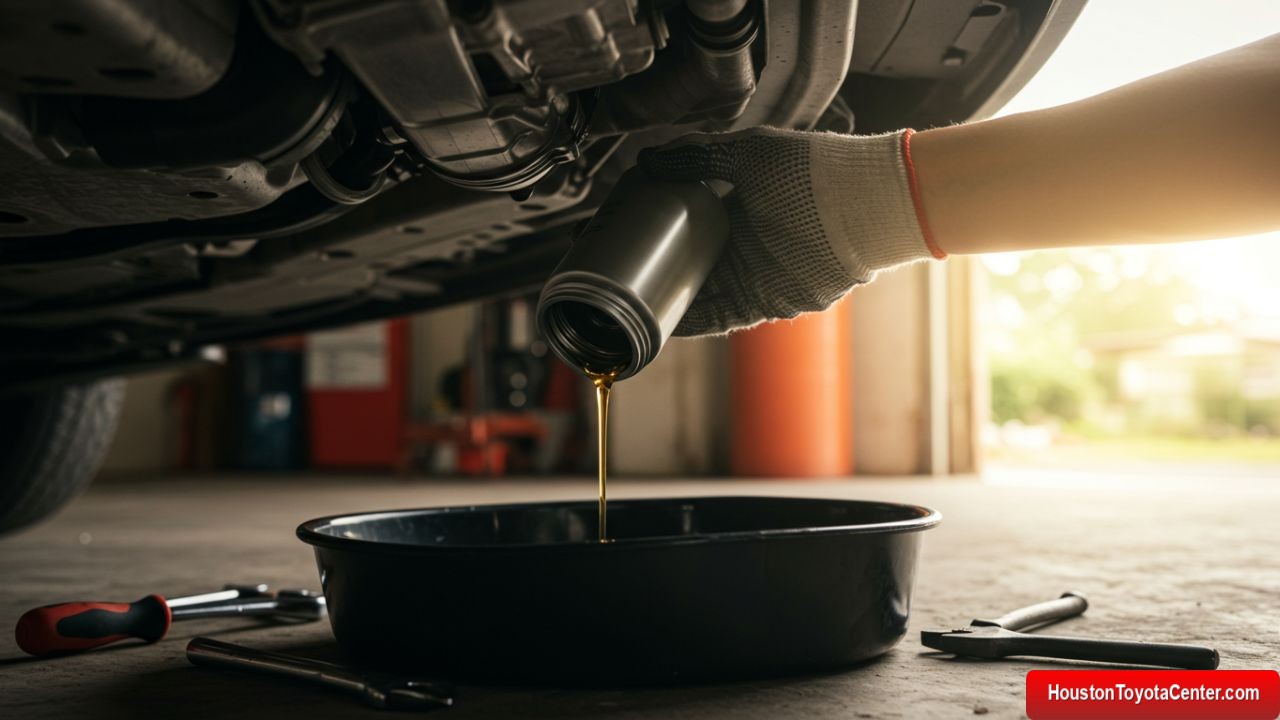Changing your own oil is one of the most empowering and cost-effective car maintenance tasks a driver can learn. Whether you’re looking to save money, get more familiar with your vehicle, or simply enjoy working with your hands, performing a DIY oil change is a great place to start.
This comprehensive guide will walk you through the entire oil change process — from tools and safety to proper disposal and advanced tips.
Why Change Your Own Oil?
Oil is the lifeblood of your car’s engine. It lubricates moving parts, cools engine components, reduces friction, and carries away debris. Over time, oil becomes dirty and loses its effectiveness. That’s why every vehicle has a recommended oil change interval.
But why do it yourself?
FREE: Quickly identify and understand problems with your vehicle 🚘
CLICK HEREBenefits of a DIY Oil Change:
- Save Money: DIY oil changes cost half or less of what you’d pay at a shop.
- Learn Your Vehicle: You’ll get to know how your car works under the hood.
- Convenience: No waiting at the mechanic.
- Satisfaction: There’s nothing like the feeling of doing it yourself.
Tools and Supplies You’ll Need
| Item | Purpose | Tip |
|---|---|---|
| New engine oil | Lubricates engine | Check your owner’s manual |
| New oil filter | Traps contaminants | Must match engine model |
| Oil filter wrench | Loosens/tightens filter | Choose the right size |
| Socket wrench set | Removes drain plug | Typically 13mm or 15mm |
| Oil drain pan | Catches old oil | Minimum 5-quart capacity |
| Funnel | Pours new oil cleanly | Prevents spillage |
| Gloves and rags | Keeps hands clean | Latex or nitrile preferred |
| Jack and jack stands | Lifts vehicle (if necessary) | Never use only the jack |
| Owner’s manual | Reference for specs and procedures | Crucial for oil type/amount |
Step-by-Step Oil Change Instructions
Step 1: Prepare Your Work Area
Pick a flat, well-ventilated space like your garage or driveway. Make sure the engine is cool, and park the car on a level surface. Use wheel chocks or bricks to prevent rolling.
Safety Tip: Never go under a car that’s supported only by a jack. Always use jack stands.
Step 2: Gather Your Tools and Materials
Place everything within arm’s reach. Lay out your tools and confirm you have the correct oil type and amount. Use your manual or check online resources like OilSelector.com for accurate specifications.
Step 3: Lift the Vehicle (If Needed)
Not all vehicles require lifting for an oil change. However, if your oil pan is hard to reach, use a jack and jack stands:
- Place the jack at the manufacturer’s recommended lift point.
- Raise the vehicle until you have clearance.
- Secure with jack stands on each side.
- Gently shake the car to confirm stability.
Step 4: Remove the Oil Drain Plug
- Place the drain pan beneath the oil pan’s plug.
- Use a socket wrench to loosen and remove the plug.
- Let the oil drain completely — this may take 5 to 10 minutes.
- Once drained, clean the plug and reinstall it securely.
Pro Tip: Let the engine run for 2–3 minutes before changing the oil to warm it up slightly. This helps the oil flow better.
Step 5: Remove the Old Oil Filter
- Locate the oil filter (usually a round metal cylinder).
- Use the oil filter wrench to loosen and remove it.
- Oil will leak — have rags ready.
- Check the engine to ensure the rubber gasket came off with the filter. If it sticks to the engine, remove it manually.
Step 6: Install the New Oil Filter
- Lightly coat the gasket on the new filter with a bit of fresh oil.
- Screw the filter into place by hand. Do not over-tighten — finger tight plus a quarter turn is enough.
Warning: Over-tightening can crush the gasket and cause leaks.
Step 7: Add New Oil
- Remove the oil cap on top of the engine.
- Use a funnel to pour in the new oil slowly.
- Start with 90% of the required amount, then check the dipstick.
- Add more oil until the dipstick shows full — do not overfill.
Step 8: Check for Leaks
- Start the engine and let it run for 1–2 minutes.
- Turn it off and inspect underneath for leaks from the drain plug or filter.
- If everything is dry, you’re good to go.
Step 9: Properly Dispose of Old Oil
Used motor oil is hazardous waste and must not be poured down the drain or in the trash.
Take it to:
- Auto parts stores (e.g., AutoZone, O’Reilly, Advance Auto Parts)
- Municipal recycling centers
- Local oil recycling events
Fun Fact: Just 1 gallon of used oil can contaminate 1 million gallons of water.
How Often Should You Change Your Oil?
| Vehicle Type | Suggested Interval |
|---|---|
| Modern Synthetic (Normal) | Every 7,500–10,000 miles |
| Conventional Oil Users | Every 3,000–5,000 miles |
| High-Performance Engines | Every 5,000 miles or less |
| Heavy Off-Road Use | Every 3,000 miles or per trip basis |
Always refer to your owner’s manual for the most accurate intervals.
Common Mistakes to Avoid
- Using the wrong oil – Always double-check viscosity and type.
- Over-tightening the filter – Can damage the gasket.
- Not tightening the drain plug enough – Causes leaks.
- Forgetting to check the oil level – Can lead to engine damage.
- Recycling mistakes – Used oil must be handled properly.
When to Leave It to the Pros
While most oil changes are beginner-friendly, some situations call for a pro mechanic:
- Stripped or stuck drain plug
- Hard-to-reach oil filters
- Hybrid/electric vehicles with complex systems
- Severe oil leaks
The Cost Comparison
| Service Type | Average Cost |
|---|---|
| DIY Oil Change | $25–$45 |
| Quick Lube Shop | $45–$70 |
| Dealership Service | $70–$100+ |
FAQs
Q: How long does a DIY oil change take?
A: The first time might take 45 minutes to an hour. Once you’re used to it, 20–30 minutes is typical.
Q: Can I reuse oil filters?
A: No. Always use a new oil filter with each oil change.
Q: What happens if I overfill my oil?
A: Too much oil can foam and reduce lubrication, damaging your engine. Drain the excess immediately.
Q: What if I skip an oil change?
A: Skipping can lead to engine sludge, wear, overheating, and eventual failure.
Tips to Make the Job Easier
- Wear gloves to avoid skin contact with used oil.
- Keep a dedicated funnel and pan for oil changes only.
- Use a magnetic drain plug to capture metal particles.
- Record your oil changes to stay on schedule.
Final Thoughts
Changing your own oil is one of the best ways to start learning car maintenance. It’s straightforward, satisfying, and budget-friendly. With this step-by-step guide, you can take control of your vehicle’s health and keep it running strong.
Get your hands a little dirty — and keep your engine clean.
Recommended Starter Oil Change Kits
| Brand | Includes | Best For |
|---|---|---|
| Mobil 1 Kit | Synthetic oil + filter + gloves + funnel | Premium vehicles |
| Fram Oil Change Kit | Filter + drain plug gasket + instructions | First-timers |
| Pennzoil Kit | Conventional oil + filter + cleanup pads | Budget-conscious drivers |
Ready to Try It Yourself?
If you’ve read this guide, you’re already halfway there. Gather your tools, grab your oil, and give it a shot — your engine (and your wallet) will thank you.


Leave a Reply